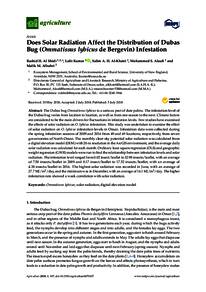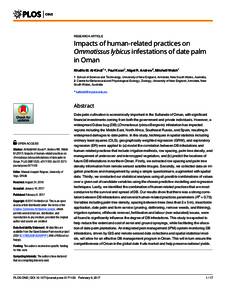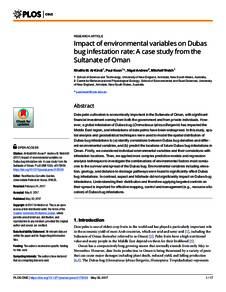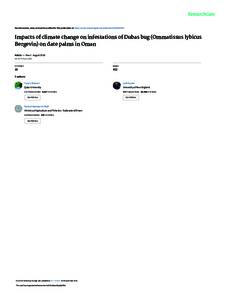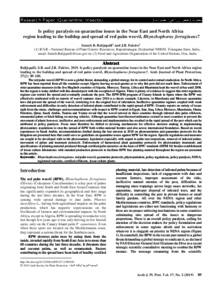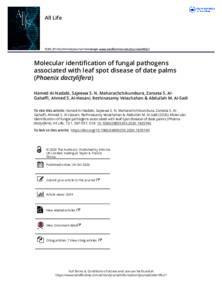وثيقة
Does solar radiation affect the distribution of dubas bug (ommatissus lybicus de bergevin) infestation.
المعرف
DOI: 10.3390/agriculture8070107
المصدر
Agriculture (Switzerland). v. 8, 7, 107
المساهمون
Kumar, Lalit., مؤلف
Al-Khatri, Salim A. H. , مؤلف
Al-Aufi, Mohammed S., مؤلف
Al-Bahriyah, Malik M. , مؤلف
الدولة
Switzerland.
الناشر
MDPI AG.
ميلادي
2018-07-05
اللغة
الأنجليزية
الموضوع
الملخص الإنجليزي
The Dubas bug Ommatissus lybicus is a serious pest of date palms. The infestation level of the Dubas bug varies from location to location, as well as from one season to the next. Climate factors are considered to be the main drivers for fluctuations in infestation levels. Few studies have examined the effects of solar radiation on O. lybicus infestation. This study was undertaken to examine the effect of solar radiation on O. lybicus infestation levels in Oman. Infestation data were collected during the spring infestation seasons of 2009 and 2016 from 49 and 69 locations, respectively, from seven governorates of North Oman. The monthly clear-sky potential solar radiation was calculated from a digital elevation model (DEM) with 20-m resolution in the ArcGIS environment, and the average daily solar radiation was calculated for each month. Ordinary least square regression (OLS) and geographic weight regression (GWR) models were run to find the relationship between infestation levels and solar radiation. The infestation level ranged from 0.02 insect/leaflet to 32.98 insects/leaflet, with an average of 7.50 insects/leaflet in 2009 and 0.17 insect/leaflet to 17.52 insects/leaflet, with an average of 4.38 insects/leaflet in 2016. The highest solar radiation was recorded in June, with an average of 27.7 MJ/m2/day, and the minimum was in December, with an average of 14.1 MJ/m2/day. The higher infestation rate showed a weak correlation with solar radiation.
ISSN
2077-0472
URL المصدر
قالب العنصر
مقالات الدوريات

